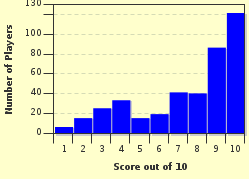Quiz Answer Key and Fun Facts
1. The basic unit of British currency is the penny. Before decimalisation, how many pennies were there to the pound?
2. In "old money" the symbol for a penny was "d". What were the origins of this?
3. The predecimal coin known as the florin continued to be circulated after decimalisation. How much was it worth in "new money"?
4. Coinage, like any other area of life, attracts its slang terms. What was the value of the coin known as the "tanner"?
5. The smallest denomination coin was the farthing. Which bird was depicted on this coin?
6. What was the coin which had the value of 5 shillings known as?
7. The value of the guinea fluctuated over the years between 20 and 30 shillings. Its value was fixed in 1717. How many shillings was it then worth?
8. The coin known as the groat was taken out of circulation in the 1800s. For what reason however have some groat coins been minted since that time?
9. In 1947 the metal content of all British silver coins was changed to what?
10. Decimalisation finally put a stop to all that wonderful British "funny money". On which date did that occur?
Source: Author
PeggyLouisa
This quiz was reviewed by FunTrivia editor
ozzz2002 before going online.
Any errors found in FunTrivia content are routinely corrected through our feedback system.

